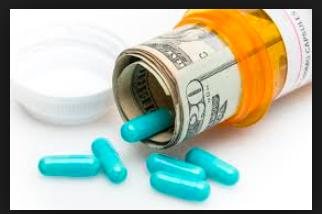I shouldn’t have been surprised—you can’t mention $2.125 million and expect people to just nod their heads and move on.
Last week, I wrote about Zolgensma, the new gene therapy from Novartis that treats infants with the deadly disease spinal muscular atrophy (SMA). Though most of the article focused on the science behind this lifesaving new medicine, its whopper of a price tag—the largest for any drug—attracted nearly all the attention.
During discussions about drug pricing, questions with no easy answers often bubble to the surface. What’s the value of a year of human life? What about a decade? And does it matter if the patient is young or old? How should innovation be incentivized? How do we protect patients’ families from price gouging when they’d be willing to pay any price to save their loved one’s life? A nuanced, thoughtful answer to any of these questions would require many more words than this article can hold.
But rather than punting on the cost issue once again, I’ll spend the next few weeks examining some of the most common answers to a more specific and topical pricing question: why is the price of Zolgensma so high?

Image: Benzinga
Answer #1: The company that invented Zolgensma needs to recoup the costs of developing it.
Arguments over the exact price of developing a new drug and bringing it to market continue to consume electronic ink by the bucketful, but nearly everyone agrees that it costs a lot. Therefore, it might seem reasonable that a company that wins FDA approval for a new medicine would try to make that money back. But what any college sophomore majoring in economics will tell you is that those costs are already sunk and should not influence the firm’s behavior moving forward.
Though it may seem counter-intuitive, that precocious 19-year-old has a point: companies should price their new drugs to make as much money as possible from that point on, regardless of how much was spent to get there. Revenue and cost projections are important factors when determining whether to start a project, but those decisions are made before the costs are sunk. Setting a drug’s price after the vast majority of drug development costs have already been paid is a different story.
Novartis wouldn’t have acquired AveXis—and thus the rights to push Zolgensma to the finish line—if it hadn’t believed that it would make money on its investment. The expectation of being able to charge a high price for Zolgensma was likely a key factor in that decision. But if that cost–benefit calculus had flipped at any point along the way, Novartis should have pulled the plug; there’s no need to “throw good money after bad” and chase the ghosts of sunk costs.
Novartis believes that $2.125 million is their magic, Goldilocks-esque number for a single dose of Zolgensma. If the price is too high, then patients/insurers won’t be willing or able to pay, and the number of customers will decline. And if the price is too low, then each purchase will yield less revenue. Embedded in the price of Zolgensma, therefore, are predictions of how SMA patients, insurance companies, politicians, activists, and others will behave for many years. How do you make a spreadsheet for that?
Is Zolgensma expensive? Absolutely. Are high R&D costs a viable excuse? No way. But is it still worth it? Very possibly.




